The mosaics, latest in a series of Byzantine archaeological finds in Gaza, are “in a perfect state of conservation”.
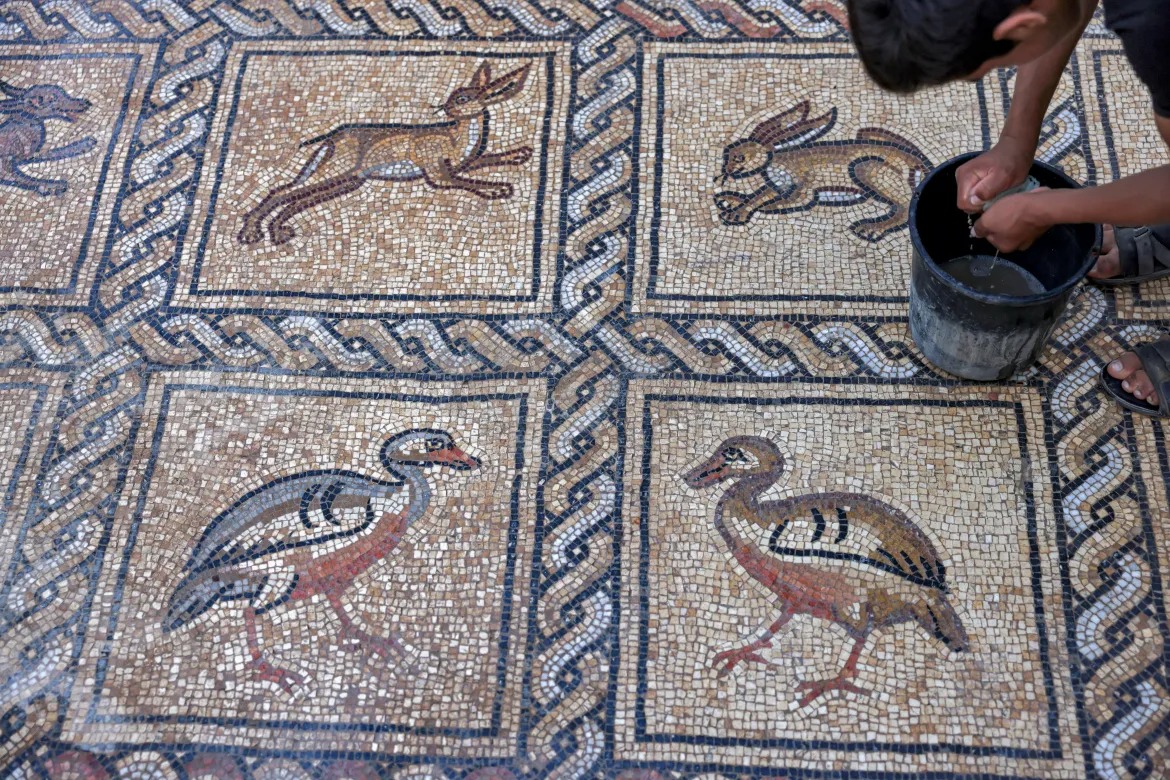
The son of Palestinian farmer Salman al-Nabahin uses a sponge to uncover Byzantine mosaics that were discovered by his father while ploughing his land in Bureij in the central Gaza Strip. [Mohammed Abed/AFP]
Byzantine mosaics dating from the 5th to the 7th century have been unveiled in the central Gaza Strip on Friday.
Farmer Salman al-Nabahin unearthed the relic six months ago while working in his olive orchard in the Bureij refugee camp. He then spent three months excavating it with the help of his son.
The mosaic floor, boasting 17 iconographies of beasts and birds, is well-preserved and its colours are bright.
“These are the most beautiful mosaic floors discovered in Gaza, both in terms of the quality of the graphic representation and the complexity of the geometry,” said René Elter, an archaeologist from the French Biblical and Archaeological School of Jerusalem, whose team examined the finds, told the Associated Press.
Elter estimates the mosaic floor dates back to a time between the 5th and the 7th centuries but told AP a proper excavation is needed to determine when exactly it was built and whether it was part of a religious or secular complex.
He has not been able to visit the site but viewed photos and videos taken by local research partners.
The mosaics are the latest in a series of Byzantine archaeological finds in Gaza in recent years.
In January, the remains of a 5th-century church were unveiled in Jabaliya in the northern Gaza Strip following a three-year restoration project.
The Gaza Strip, a Palestinian coastal enclave between Israel and Egypt, was a bustling trade route between Egypt and the Levant in ancient times. The coastal strip is full of remains of ancient civilizations, from the Bronze Age to the Islamic and Ottoman eras.
The Gaza Strip has been blockaded by Israel since 2007, resulting in half of its population of two million living in poverty today and unemployment of about 45 percent.
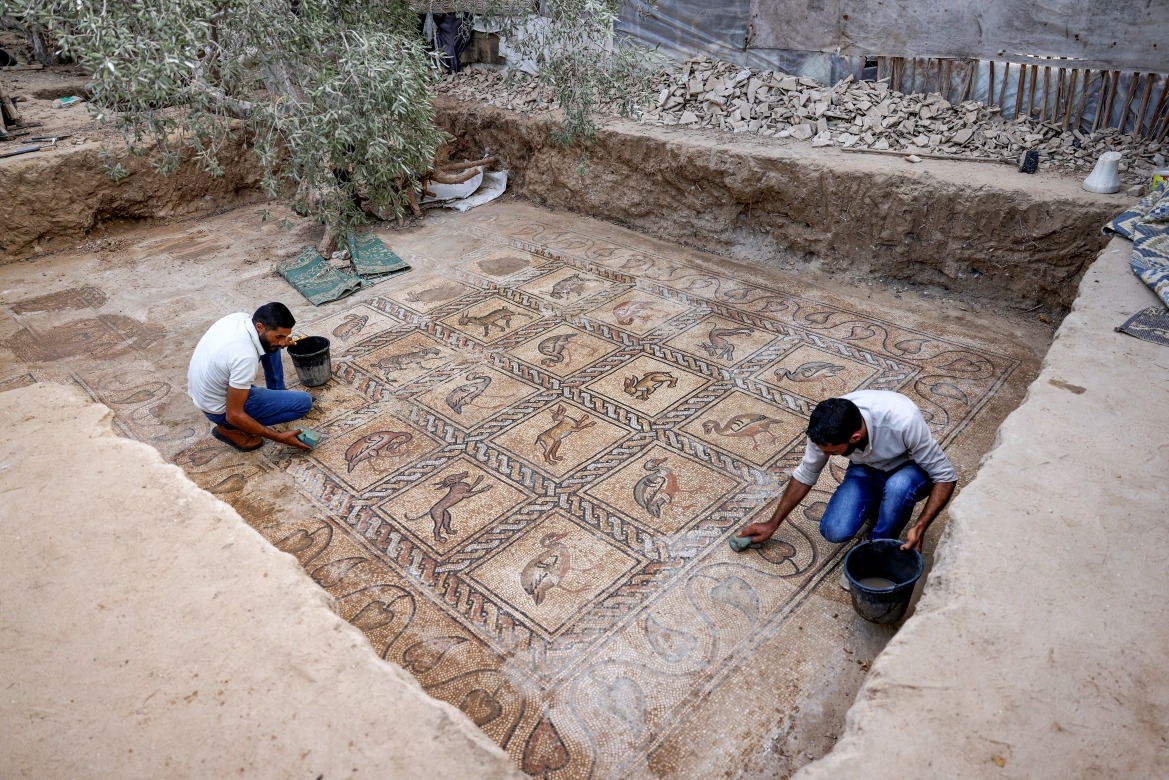
Found in an area less than a kilometre (half a mile) from the often tense border with Israel, the mosaics are “in a perfect state of conservation”, said French archaeologist Rene Elter, a researcher associated with the French Biblical and Archaeological School of Jerusalem whose team examined the finds. [Mohammed Abed/AFP]

The mosaics are the latest in a series of Byzantine archaeological finds in Gaza in recent years. [Mohammed Abed/AFP]

Rene Elter said the mosaics may have adorned the floor of a church or private villa. [Mohammed Abed/AFP]
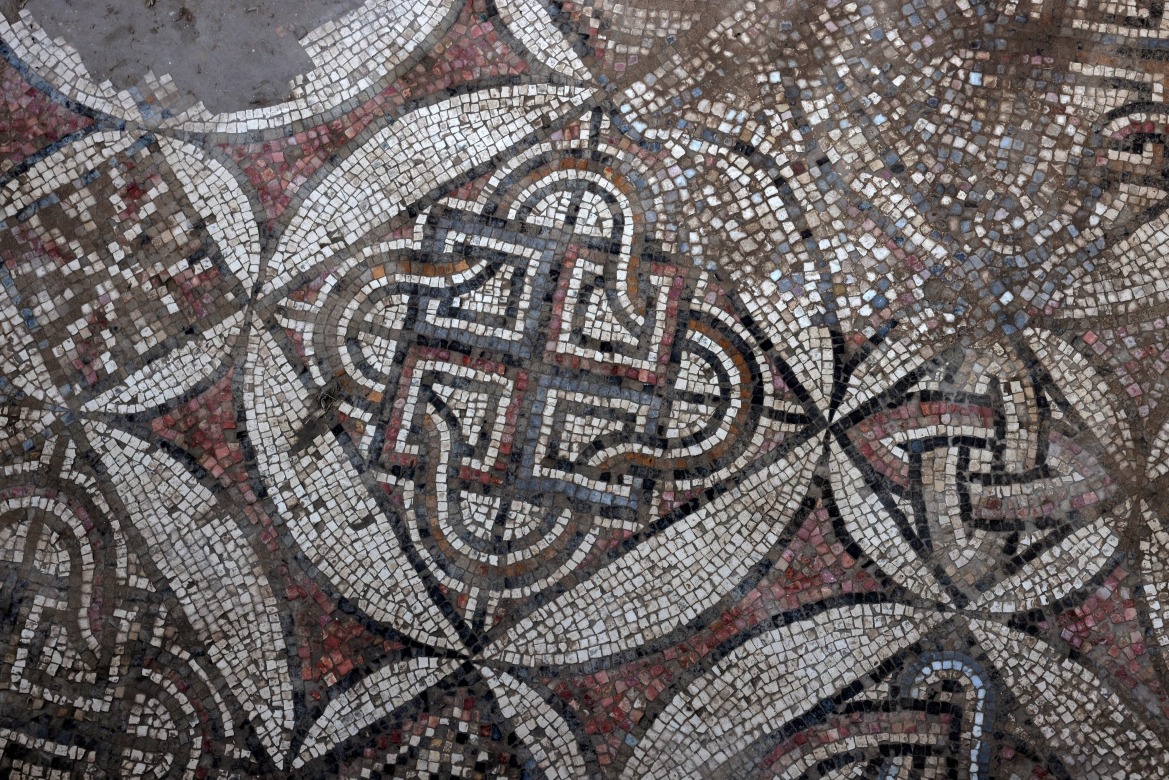
“It’s work of excellent quality, they used materials that were certainly relatively expensive,” Elter said. [Mohammed Abed/AFP]
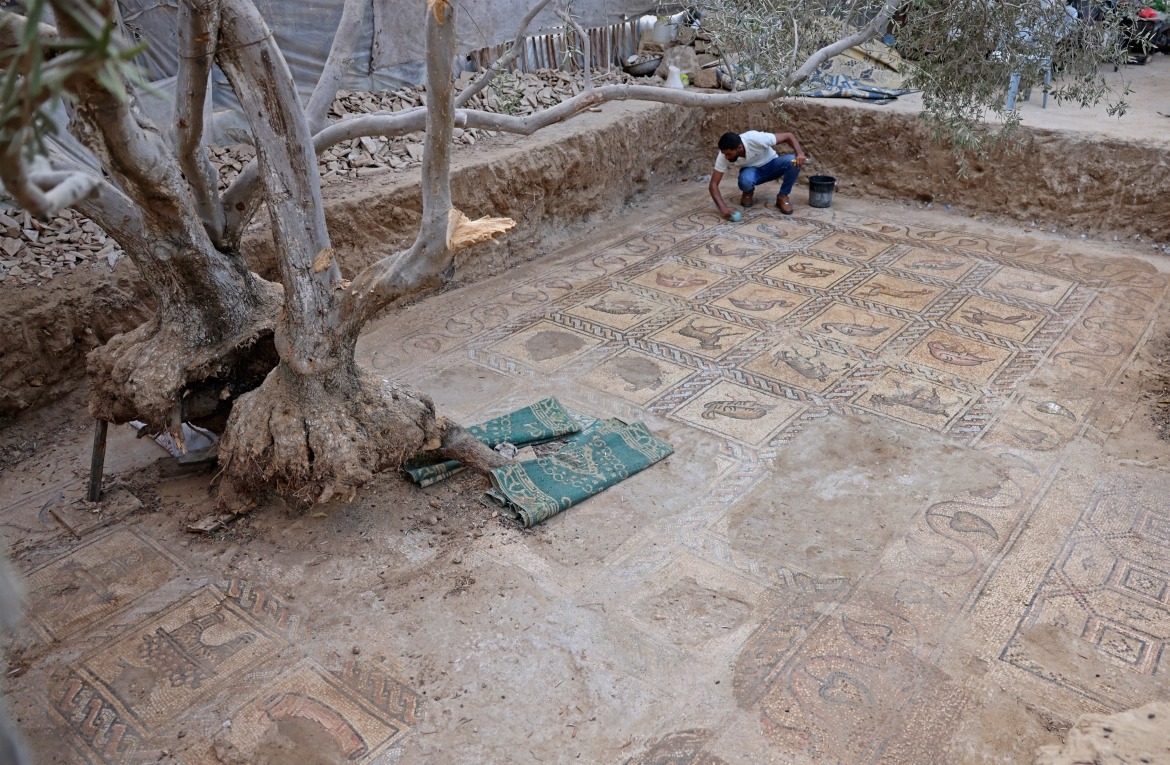
Elter, who has conducted research in Gaza in the past, has not been able to visit the site but viewed a series of photos and videos taken by local research partners. [Mohammed Abed/AFP]
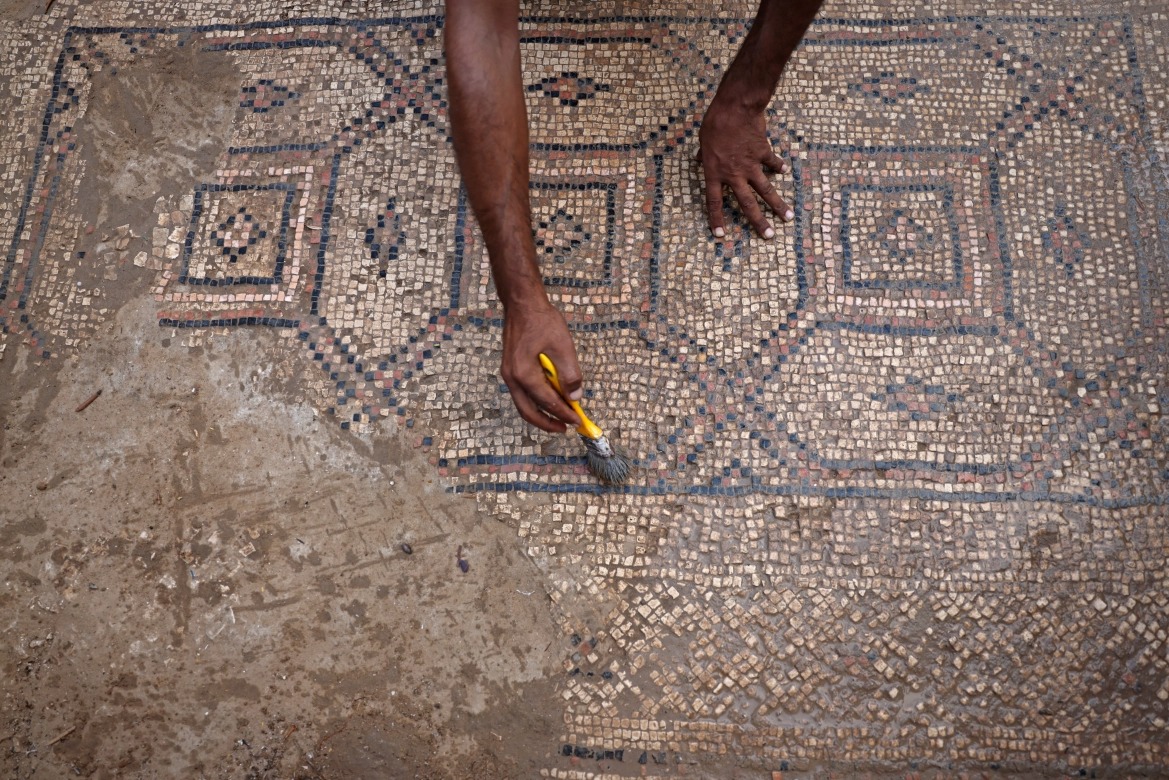
The Byzantine era was a time of wealth and artistic patronage in Palestine, with the construction of many new churches and other monuments. [Mohammed Abed/AFP]
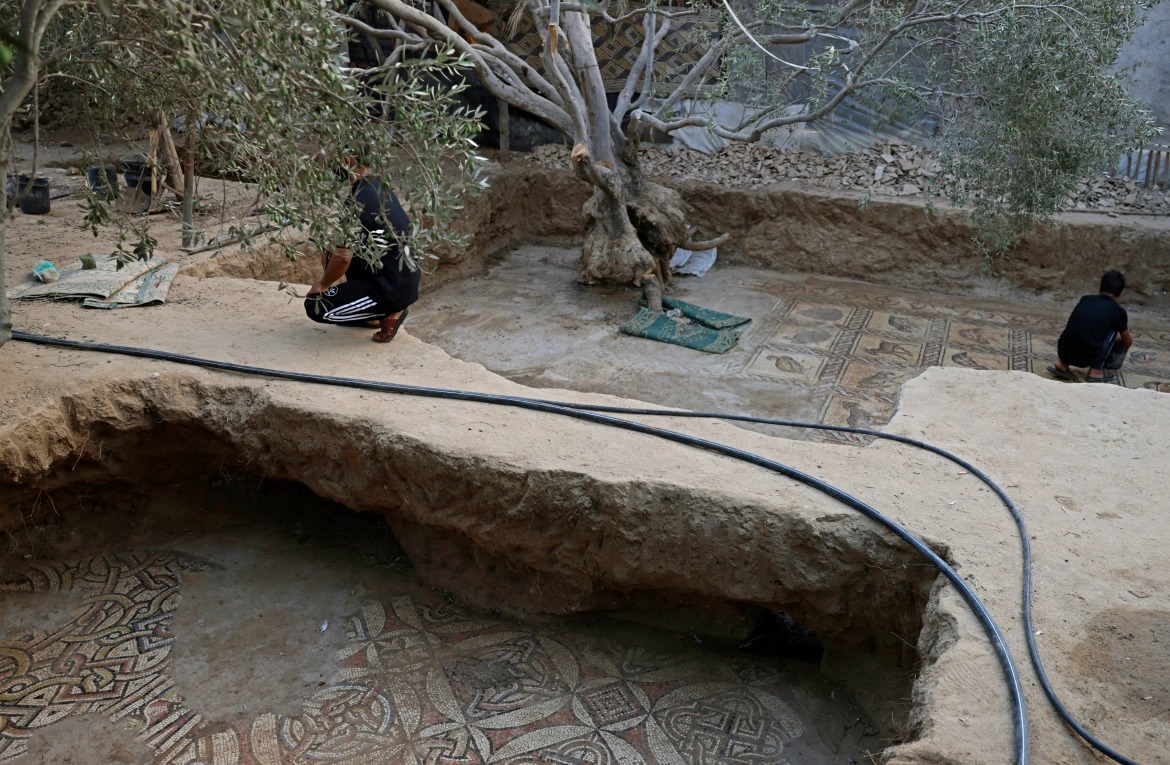
The patch of land holding the mosaic is about 500 square meters (5,400 square feet) and three dug-out spots reveal glimpses of the mosaic. [Mohammed Abed/AFP]

Leave a Reply